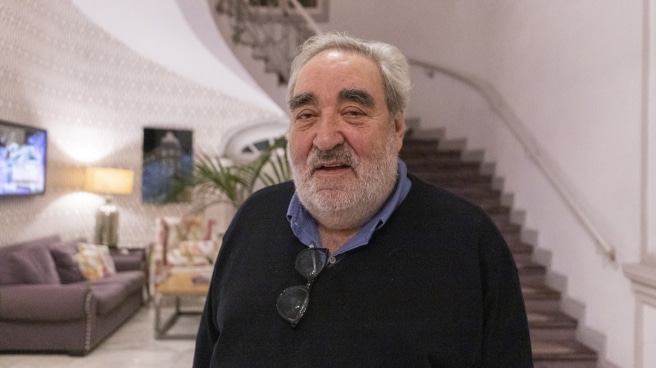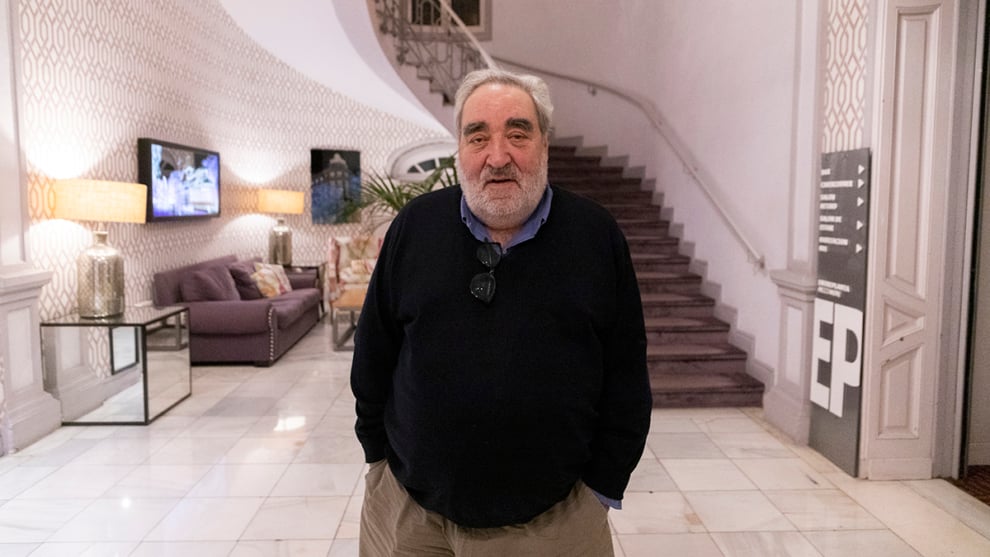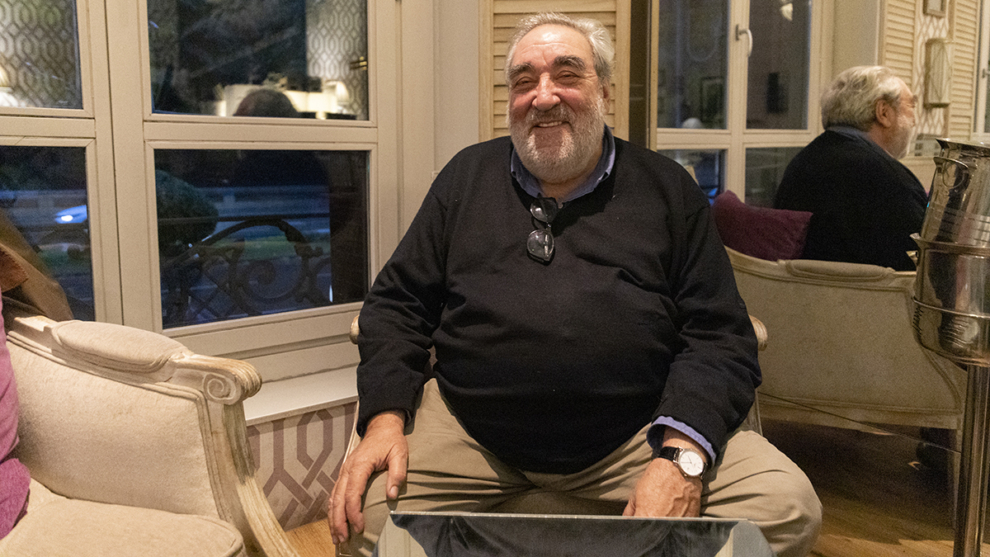

Portuguese architect Eduardo Souto de Moura.
From Eduardo Souto de Moura (Oporto, 1952), one of the most important architects of our time, his ability to adapt to his environment, his minimalist simplicity and respect for tradition are often emphasized. These are all qualities of his way of working, as well as his way of understanding life. Well, for the Portuguese, the meaning of his architecture comes from the need to “solve problems in the most real and natural way possible.”
Winner Pritzker Prize (often called the “Nobel Prize for Architecture”) is the author of great architectural works such as the Municipal State of Braga or the Porto Metro, but his stamp can be seen primarily in small buildings, houses where the artist can afford to be more independent.
Souto de Moura with his teachers Alvaro Siza And Fernando Tavora, is one of the architects of the revolution in Portuguese architecture and one of the most influential in the world. In recent years, the neighboring country has emerged as a talent factory capable of setting the course for the principles that are today understood as sustainable architecture.
The Portuguese architect, who recently received a gold medal from the Circulo de Bellas Artes in Madrid, talks to Independent about his relationship with Spain, what he expects from the cities of the future and why the avant-garde involves focusing on what has always been done.

Ask.- What is his relationship with Spain? What does this mean to you?
Reply.- It’s not easy because as a child I was taught in school as if Spain was the enemy. There is a popular saying that goes: From Spain “the silently born wind”, “the silently born marriage” (No good wind, no good marriage from Spain). This has changed because that’s not really the case. I really like Madrid, it’s a city I love and it’s also very close to Portugal. I have many architect friends here, they treat me well, they publish in magazines, and invite me to give lectures. The best part is that there are cultural activities not found in Portugal, good exhibitions and good bookstores. Coming to Madrid is a celebration for me, and now that I was awarded the Fine Arts Circuit medal, it’s like my home. Whenever I visit I like to go to Thyssen, Reina Sofia, Prado, Circulo de Bellas Artes has a very good bookshop and nearby is Naos which specializes in architecture. For food, I like to go to La Manduca de Azagra, one of my favorite restaurants. I also travel to Pamplona often and am invited to give seminars through my friend Patsy Mangado. I feel good here, with friends and with people. But Barcelona is a little more distant, it’s like going to France.
IN.- When we look at Portugal, what is striking is that such a geographically small country presents such a large concentration of good architecture. How is this explained?
A.- My generation had very good teachers whom I studied and worked with, such as Siza or Tavora. We Portuguese walk a lot because it is a very limited and poor country. Tavora traveled all over the world, visited Japan, the USA, met Louis KahnTo Frank Lloyd Wright. When he returned, the idea of Art Nouveau changed a little. Before Tavora, architecture was always imported: Portuguese Gothic, Portuguese Renaissance, Portuguese Baroque – we were always behind. With this generation, Portugal really goes alongside the European and world avant-garde precisely because it left. Alvaro Siza, for example, also visited the Nordic countries. There is a very beautiful phrase from a French poet: “Portugal is a country of travel, from time to time it comes into contact with Europe.”
IN.- Spaniards with an architectural sense tend to find Portugal better built and planned, where its heritage is better taken care of. Do you think they are right?
A.- Don’t know. On the taxi ride from the airport here, my wife told me that Madrid was very well preserved, that it was not like us. Each sees in the other what he lacks. But I think no, Portugal destroyed a lot of heritage. But hey, everyone does what they can.
IN.- What do you think is the key point that defines your way of understanding architecture?
A.- I try to solve problems in the most real and natural way possible, without believing in the grand meaning of things. One thing is what it is: a chair is a chair, and a house is a house. A house is walls with holes, doors and windows and then there may be other meanings, but if from the very beginning you start thinking about all the meanings of things, you will never reach the end and it is not you who should decide, but others. ., the collective, the one who must recognize it.
“What they don’t realize is that glass buildings are being built in the desert.”
IN.- Their ability to be environmentally conscious is always mentioned. Where did this idea come from?
A.- This environmental aversion comes from the scale of the buildings being proportional to their context. When Portugal and Spain divided the world in the Treaty of Tordesillas, the Portuguese were a million, and they had Ceuta, Africa, India, Japan, Brazil, all this, and they were only a million people. They were not like the Spaniards, who had an army, a church that accompanied colonization. The Portuguese did not have an army, wherever their ships arrived, they left four or five families and built with funds that had an architecture very suitable for the place, and also small, so it did not cost much. I think the idea of taking environmental capabilities into account comes from there.
IN.- It’s also interesting that now it’s avant-garde again.
A.- Previously, architecture was more natural. If it rained heavily, the roofs were sloped, and if the rain was light, the roofs were flatter to save water. Now architecture can be unnatural because it has the means to solve these problems. Even so, it is unclear why glass buildings are built in the desert when traditional architecture in these areas is characterized by thick walls and small windows. To solve this problem they use devices to reduce the temperature using air conditioning, this seems stupid to me but the reality is that it exists. Some countries have a lot of money and they create architecture more for meaning than to solve problems.

IN.- His work often highlights large projects, such as the Braga Stadium or the Viana do Castelo Cultural Centre. But there were always more small jobs for you. On which scale do you feel most comfortable?
A.- In both. I like the big scale because I have the opportunity to change the geography. The Braga stadium was built inside a mountain, and for the Porto metro I built 70 kilometers of lines and small areas to adapt them. In small works I can go to the smallest detail, insert a mirror between the seam of two bricks… One balances the other, but maybe on a small scale I am more comfortable, not because it is easier or more difficult, but because it is not necessary so much money and so many people, and I can be more independent.
IN.- You already mentioned Alvaro Siza. What is the most important thing you learned from him?
A.- Character is more than a name, the way he sees the world, the way he finds tools to work with, the intellectual honesty. His attitude towards life and strength to work day and night until problems are solved. I really like him as an architect, but he couldn’t use or copy Siza’s final forms, the only thing I can copy is his working methodology, the way he can make 40,000 drawings to solve a door or window. But I don’t have the courage to copy it, it would be funny.
“Copying is the hardest thing”
IN.- Does it take courage to copy? We always think that copying is easy.
A.- Copying is the hardest part, although it is easy to be tempted to do the same. But copying is not just doing the same thing, it is an epidermal phenomenon, it is understanding why he did what he did, you need to go beyond the result. It would be funny if I tried, for example, to copy the Sagrada Familia in Barcelona, everyone would laugh at me, because I would always be far from the original.
IN.- How do you see the future of cities? What do you think architecture can do to promote good, sustainable growth that can withstand climate change?
A.- Too much talk and not enough done. The situation will not change as much as we think because man is very conservative in the architecture of his cities. The design of European cities has remained virtually unchanged since the times of the Greeks and Romans. New York, for example, has the same rules as back then, and is a modern and futuristic city. I think we don’t have to change much to be sustainable, but we need to use appropriate materials and not do the glass cities nonsense where people die from the heat and cold that force us to waste huge amounts of electricity. First of all, we need to understand big cities as a collection of small spaces that maintain their own identity, their squares, their gardens and their schools. Make many “small cities” in one that are well connected and give the city some complexity. Because not everything can be logical, contradictions are also beautiful, like a medieval city in which there are four or five different ways to get to a place. It is important to restore complexity, it must be green, after the pandemic we have learned to value this, and density is also necessary, since cities are dense as an alternative to the countryside. You don’t have to invent a lot, you just have to do it well, but it’s not that easy.
IN.- And how do you think architecture can contribute, if at all, to addressing rural depopulation, a problem shared by Spain and Portugal?
A.- If people don’t want to live inside, you can’t force them to do so at gunpoint. Portugal tries to promote rural development through money and amenities, but the goals go beyond that. Reality proves that people don’t want to live there, and so we have to study or work based on reality. Bring economic activities there that can attract people. You don’t need to tell the doctor that if you move to the city, you will earn more because most people prefer to earn less in Lisbon, where they can go to the movies, bookstores, restaurants rather than walk around the city. plateau, with a lot of money but nothing to do. Another issue is that it is necessary to unite young and old, because Portugal is becoming an increasingly older country. You can’t create neighborhoods just for students or buildings for old people who go to bed at six o’clock in the afternoon, you have to inject some life into it. So the question is how to build realistic attractions, because after all, giving money is easy, you need to reform well to get to the bottom of it.
Source: El Independiente